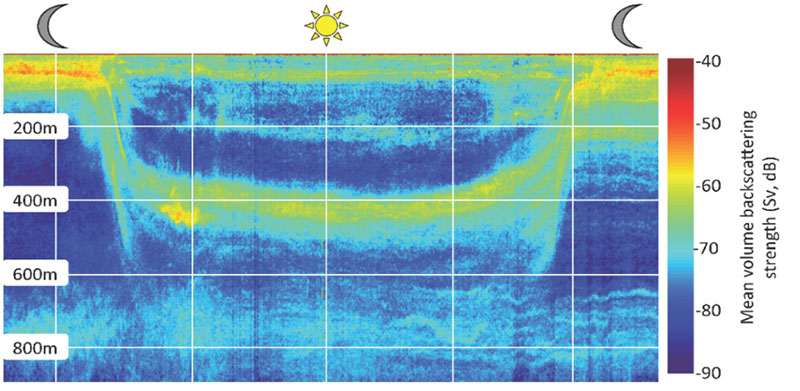
By Dr. Tracey Sutton, Nova Southeastern University
As deep-sea communities along our continental margins become discovered and explored, we can begin to ask questions about the processes that contribute to the rich diversity of life found in these ecosystems. One such process involves the ecological connection between organisms living on or near the seafloor (the benthos) and organisms within the water column (the pelagos).
The ecological interactions within the DEEP Sea Exploration to Advance Research on Coral/Canyon/Cold seep Habitats (DEEP SEARCH) study area are poorly known, but studies of seamount and continental slope ecology at similar depths in other locations have found that the intersection of pelagic (i.e., water column) animals and deep-reef assemblages provides important trophic subsidies that support enhanced biodiversity and biomass.
In addition to the provision of food to support animals of deep reef, canyon, and seep communities, the pelagic habitat also provides critical habitat for early life-history stages (larvae, juveniles) of near-bottom organisms. In short, the development and maintenance of outer continental shelf ecosystems are undoubtedly related to water column processes.
The pelagic habitat contains a diverse and highly specialized fauna, with adaptations becoming more and more “bizarre” as one goes deeper into the water column. Most organisms produce biological light (bioluminescence) similar to that of a firefly. Some animals use light to hunt, some use light to startle predators, and some use light to find mates. Predatory fishes often have enormous fangs, while their prey use light organs on their bellies to match downwelling sunlight when viewed from below.
Despite the intrinsic fascination inspired by these amazing creatures, we still lack even a basic faunal inventory of the animals living deep in the pelagic habitat. DEEP SEARCH scientists will investigate the biodiversity, abundance, and distribution of pelagic animals relative to deep coral, canyon and cold seep communities along the U.S. Atlantic continental slope.
A key aspect of pelagic habitats is the daily movement of organisms from deep daytime depths to shallower nighttime depths. This phenomenon, called “diel vertical migration,” represents the largest organized mass movement of animals on the planet when considering overall biomass, number of individuals, and species moving together. These highly coordinated migrations play a pivotal role in structuring ecological and physicochemical processes as well as the biological carbon pump of the vast oceanic ecosystems.

Echogram illustrating the ascending and descending phases of the diel migrations through the water column. The downward and upward migration activity occurs during crepuscular periods. The color scale maps to acoustic scattering intensity. Image courtesy of DEEP SEARCH - BOEM, USGS, NOAA. Download larger version (jpg, 365 KB).
Animals comprising these vertical migrations form concentrated layers both day and night. The location of these “deep-scattering layers,” so called because they are detectable using soundwaves, are likely areas of increased connectivity between the water column and deepwater habitats. DEEP SEARCH scientists will use advanced hydroacoustic sensing on board NOAA Ship Pisces to determine the depths of deep-scattering layers over and around benthic habitats of interest and will then use this information to direct net sampling to determine the species composition and quantity of organisms comprising these layers.